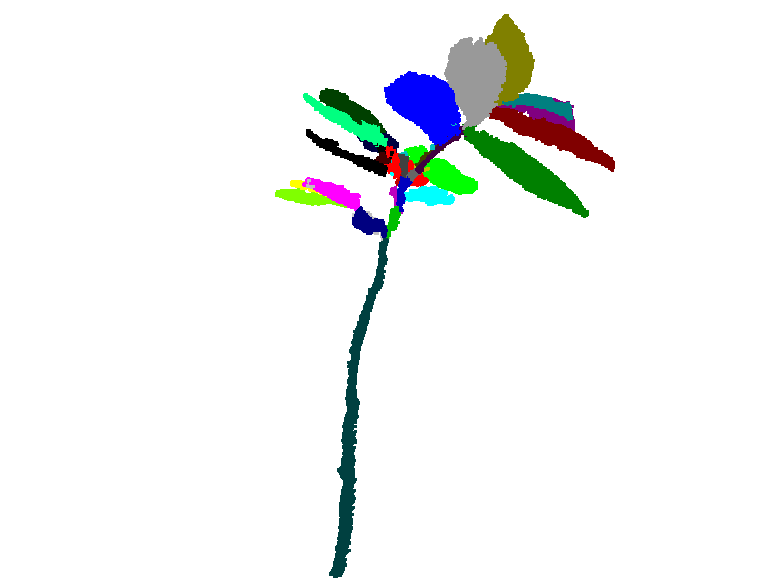Understanding digital shapes from the life sciences

t-LiDAR point cloud filtering for forest tree reconstruction
We analyze and filter or correct the noise in t-LiDAR point clouds due to multiple hits of a laser beam with the scene. We use the cleaned point cloud to enhance forest tree reconstruction methods.
| Context: | Romain Rombourg's Master then PhD thesis and Digitree project. |
| Co-workers: | Romain Rombourg (Master then PhD student), Eric Casella (researcher, Forest Research UK). |
| More details: | [FSPMA'16a], [FSPMA'16b]. |
Plant clustering into elementary units
We propose a spectral clustering approach to segment a 3D point cloud of a plant (typically acquired with a laser scanner device) into elementary units (branches, petioles, leaves).
| Context: | PlantScan3D project. |
| Co-workers: | Eric Casella (researcher, Forest Research UK), Rémy Cumont (intern), Dobrina Boltcheva (postdoc). |
| More details: | [FSPM'13], [IJRS'16]. |
Ontology-based anatomical segmentation
To automatically segment a 3D mesh of a human organ into anatomical meaningful parts, we propose to benefit from standardized anatomy information, organized in an ontology (for instance myCorporisFabrica).
| Context: | Sahar Hassan's PhD thesis. |
| Co-workers: | Sahar Hassan (PhD student), Georges-Pierre Bonneau (professor, Univ. Grenoble), Olivier Palombi (neurosurgeon and assistant professor, Univ. Grenoble). |
| More details: | [S3DMC'10]. |
Automatic cerebral aneurysm localization and quantification
We propose a simple method to detect, locate and quantify the size and shape of aneurysms on blood vessels, to help neurosurgeons before operation.
| Context: | Sahar Hassan's Master and PhD theses. |
| Co-workers: | Sahar Hassan (Master then PhD student), François Faure (assistant professor, Univ. Grenoble), Olivier Palombi (neurosurgeon and assistant professor, Univ. Grenoble). |
| More details: | [CAIP'11]. |